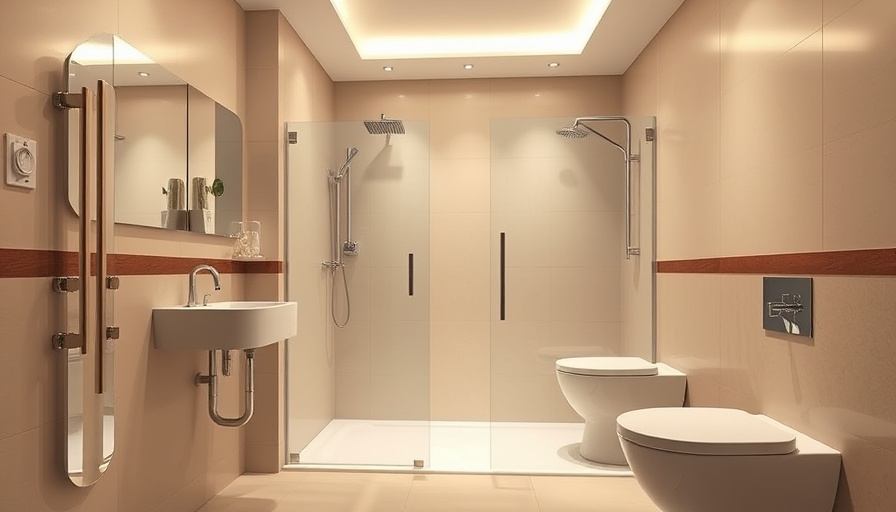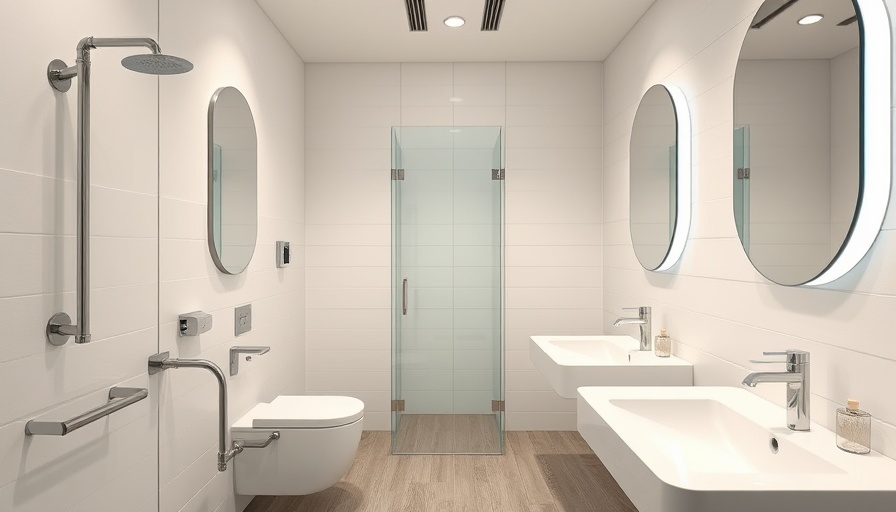
Transforming Your Home: The Essential Role of Grab Bars
As our loved ones age or face mobility challenges, ensuring their safety at home becomes paramount. Grab bars are a simple yet effective solution that can significantly reduce the risk of falls, especially in high-risk areas like bathrooms and stairways. In Toms River, installing grab bars is more than just a precaution; it’s a proactive measure in creating a nurturing, accessible environment for those we care about.
Understanding the Importance of Safety Features
The reality is stark: according to health studies, a majority of falls in older adults occur in the bathroom, where slippery surfaces can lead to serious injuries. Installing grab bars can mitigate this risk, providing a vital support system that allows individuals to maintain independence while performing daily activities. In Toms River, where the population is aging, there’s an increasing demand for such safety features. Installing grab bars transforms a home — not just making it safer but also enhancing quality of life.
Choosing the Right Grab Bars: What to Consider
When considering which grab bars to install in your home, several factors must be evaluated. The variety available in the market can be overwhelming — from straight and curved designs to different lengths and materials. It’s essential to choose bars that offer the right support for their placement. For instance, a longer, straight bar might be beneficial in a shower, while an L-shaped bar could provide added support at a corner. Material is also critical; stainless steel provides durability, while textured surfaces enhance grip, particularly when wet.
Gathering Tools and Materials for Installation
Before installation, ensure you have the right tools handy to facilitate a smooth process. Here’s what you’ll typically need: a stud finder to locate wall studs, a drill, a level, measuring tape, and appropriate screws for mounting. For tiled areas, a masonry bit will be crucial for avoiding cracks while drilling. Safety gear like goggles and gloves should not be overlooked, protecting you from debris and sharp tools during the installation.
Actionable Steps for Installing Grab Bars
Now, let’s dive into the installation process itself. Follow these steps to ensure that your grab bars are mounted securely and efficiently:
- Select the Installation Location: Identify where the grab bars will provide maximum support based on the layout of your home and common pathways where assistance is needed.
- Mark the Placement: Use the measuring tape and pencil to mark where the bars will go, ensuring they are positioned within reach.
- Check the Wall Structure: Using the stud finder, locate the wall studs to ensure strong support. If you’re mounting on a non-studded wall, consider using toggle bolts for added reinforcement.
- Drill and Install: Drill pilot holes, and use screws to attach the grab bars securely to the wall, double-checking with a level to ensure they are straight.
- Final Check: Once installed, give the bars a firm tug to confirm they are securely mounted.
Emphasizing Long-Term Safety and Accessibility
By installing grab bars, you’re not only improving safety but also enhancing the home’s accessibility for everyone. This investment can lead to greater independence for your loved ones and less worry for you. The peace of mind that comes with knowing your home is equipped to prevent accidents is invaluable, particularly for families with elderly members or those recovering from surgery.
Ensuring Continued Safety: Regular Maintenance
Post-installation, it’s important to routinely check that the grab bars remain securely fastened and in good condition. Regular inspections help ensure that they retain their structural integrity and continue to support safely. Advise family members on how to use grab bars properly, reinforcing their role in fall prevention.
Let’s Make Safety a Priority
As you consider making these essential enhancements to your home, remember that safety starts with proactive planning. By following this guide, you can create an environment that not only prioritizes safety but also nurtures independence and confidence among your loved ones.
Interested in beginning your journey towards a safer home? Visit local hardware stores or consult online resources for specialized products tailored to your needs. It’s time to take action — because safety should never be an afterthought.
 Add Row
Add Row  Add
Add 




Write A Comment